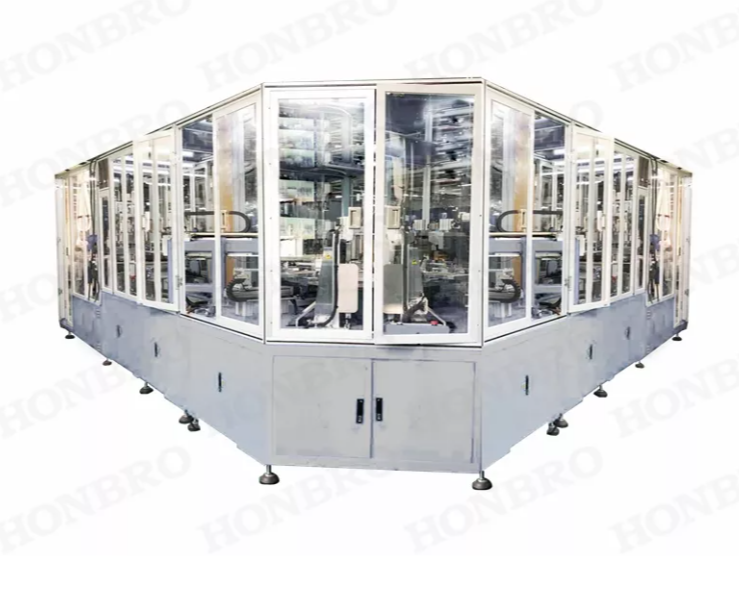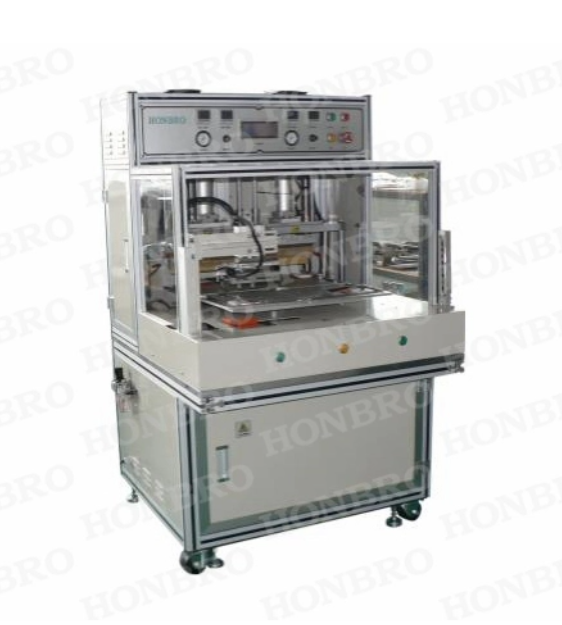Li-Ion batteries power most of today's gadgets, from smartphones to electric vehicles. But did you know the packaging is crucial to their performance and safety? Without proper packaging, these batteries could fail or even pose safety risks. In this post, we'll explore the technology behind Li-Ion battery packaging. You'll learn about the materials, packaging processes, and innovations that keep these batteries safe and efficient.
Overview of Li-Ion Battery Packaging
What Is Li-Ion Battery Packaging?
Li-Ion battery packaging refers to the materials and structures used to enclose the battery's internal components. Its main role is to protect the battery from external threats like moisture, oxygen, and physical damage, while ensuring that the battery performs safely and efficiently. There are various types of packaging methods used, including hard shell and soft pack options, each offering different advantages depending on the application.
Types of Li-Ion Battery Packaging
Li-Ion battery packaging comes in two main types: hard shell and soft pack.
● Hard Shell: This includes cylindrical and prismatic cells. These batteries are enclosed in a rigid, durable casing, typically made of steel or aluminum. They offer high safety levels due to their solid outer casing, but they tend to have a lower energy density compared to soft pack batteries.
● Soft Pack (Pouch Cells): Soft pack batteries are wrapped in a flexible aluminum-plastic film. This type of packaging is lightweight, allows for high energy density, and can be customized to fit different shapes and sizes. Pouch cells are widely used in consumer electronics, drones, and electric vehicles.
Why Is Li-Ion Battery Packaging Important?
Li-Ion battery packaging is crucial for several reasons. It provides protection from external factors like moisture, oxygen, and physical damage. Without proper packaging, the battery could degrade, short-circuit, or even explode.
It also plays a significant role in safety. Packaging helps prevent leaks and short circuits, ensuring the battery remains stable during use and transport. Finally, the packaging helps maintain the right internal environment. This is essential for the battery's longevity, ensuring it remains efficient and functional over time.

Materials Used in Li-Ion Battery Packaging
What Materials Are Used in Li-Ion Battery Packaging?
Li-Ion battery packaging often uses aluminum-plastic film, which is popular for soft pack batteries due to its flexibility and effective protection. This material is made of three layers: an outer nylon layer for protection against damage, a middle aluminum foil layer that blocks moisture and oxygen, and an inner polypropylene (PP) layer that ensures insulation. Aluminum-plastic film is lightweight, which is ideal for portable devices, and offers high energy density, meaning more energy can be stored in a smaller space. It also allows for customizable shapes, fitting the needs of various devices.
Other common materials include nylon and PET (polyethylene terephthalate), which are used for the outer layers. These materials provide durability and resistance to wear. For internal insulation, polyethylene or polypropylene is often used, helping prevent electrical shorts and overheating. These materials are cost-effective and durable, ensuring the battery's protection throughout its use.
How Are These Materials Chosen?
When choosing materials for Li-Ion battery packaging, several factors are considered. Cost is a key consideration, as manufacturers aim to balance performance and affordability. Safety is another important factor, as the materials must prevent issues like leaks, overheating, and electrical problems. Additionally, the materials need to protect the battery from moisture, oxygen, and other harmful elements. The battery type also plays a role; for instance, batteries for consumer electronics may require different materials than those used in electric vehicles. Durability is crucial for extending the battery's lifespan, and the right materials help maintain the battery's performance over time.
Packaging Processes for Li-Ion Batteries
Preparation of Materials
The preparation of materials for Li-Ion battery packaging involves several key steps. First, the battery core is assembled, including the electrodes and electrolyte. These components are carefully selected for their performance and safety. The electrodes, made of materials like lithium cobalt oxide or graphite, are paired with an electrolyte solution to allow for efficient energy storage and flow.
Once the core is prepared, material selection for insulation and durability is critical. Polypropylene (PP) is often used for internal insulation to prevent short circuits. Materials for external packaging, like aluminum-plastic film, are chosen to ensure durability while protecting against moisture and air.
Heat Sealing and Vacuum Encapsulation
The packaging process begins with heat sealing. During this process, PP layers are fused together at high temperatures to form a secure and tight seal around the battery core. This ensures that the internal components are enclosed and protected.
Following heat sealing, vacuum encapsulation is used to remove any air or moisture inside the package. By creating a vacuum, it ensures the battery's internal environment is free from oxygen and water. This is crucial to prevent degradation caused by external factors, like humidity, which can damage the battery over time.
Sealing Processes
Several sealing processes ensure the battery's integrity:
● Top-sealing: Involves the precise alignment, cutting, and folding of the packaging foil around the battery core.
● Side-sealing: The core positioning is optimized to ensure a secure side seal. This prevents any gaps where moisture could enter.
● Corner sealing: A special focus is placed on the corners of the package. These areas are more vulnerable to damage, so extra care is taken to ensure they are properly sealed.
Secondary and Final Encapsulation
After the primary sealing, secondary encapsulation ensures no air is left inside the package. This step is crucial for preventing moisture from getting trapped inside the battery, which could lead to chemical degradation.
Finally, degassing and venting are carried out. During this process, any residual gas inside the package is released to ensure the battery's safety and to maintain the packaging's structural integrity. This step helps ensure the battery is ready for use or transport without any risk of leakage or failure.

Technological Advances in Li-Ion Battery Packaging
High-Energy-Density Packaging
Recent advances in Li-Ion battery packaging have significantly improved energy density. New packaging technologies use advanced composites and thinner foils to make batteries more efficient. These materials allow for higher energy storage within the same or even smaller battery sizes. The shift from traditional, thicker packaging to these advanced options has made batteries lighter and more compact while improving performance.
Flexible and Customizable Battery Shapes
Flexible packaging is another important innovation. It allows manufacturers to create customizable shapes for batteries, which can be tailored to fit specific devices or designs. This is particularly useful in industries like automotive and drones, where battery space is often limited and needs to be optimized for performance. Flexible packaging also enables more compact designs, reducing weight and improving the overall efficiency of devices.
Module-Free Battery Pack Designs (CTP Technology)
A cutting-edge innovation in Li-Ion battery packaging is Cell-to-Pack (CTP) technology. Unlike traditional designs, CTP eliminates the need for individual battery modules, directly integrating the cells into the pack. This technology enhances space optimization, allowing for better use of the available space within the battery pack. It also improves the overall efficiency by reducing the number of components and minimizing waste. This design is becoming increasingly popular in electric vehicles, where maximizing battery capacity and space is crucial.
Li-Ion Battery Packaging and Safety
Prevention of Short Circuits
Li-Ion battery packaging plays a key role in preventing electrical failures. The materials used, such as non-conductive layers, help isolate the battery's internal components and prevent accidental contact between the positive and negative electrodes. This significantly reduces the risk of short circuits, which can cause overheating or even fires. Non-conductive materials, like polyethylene and polypropylene, act as barriers to ensure the battery remains safe throughout its lifecycle.
Protecting Against Overheating and Fire Risks
Proper heat management is critical for Li-Ion battery safety. The packaging is designed to prevent overheating, a major cause of battery malfunctions. By keeping the battery in a vacuum and moisture-free environment, the packaging reduces the chance of chemical reactions that could lead to excessive heat generation. Without moisture or oxygen, the risk of battery degradation and fire is minimized. This environment also ensures the battery remains stable during transport and use.
Meeting Regulatory and Certification Standards
Li-Ion battery packaging must comply with industry regulations, such as UN 38.3 and the IMDG Code. These certifications ensure the packaging is safe for transport and meets all safety standards. UN 38.3 covers battery testing requirements for altitude, vibration, and thermal conditions, while the IMDG Code focuses on safe sea transport. Compliance with these standards is essential for preventing accidents during shipping and handling.
Li-Ion Battery Packaging in Different Applications
Consumer Electronics
In consumer electronics like smartphones, laptops, and wearable devices, battery packaging needs to be both compact and efficient. These devices rely on lightweight and high-energy-density packaging to ensure longer battery life without adding bulk. The packaging protects the cells from external damage and helps manage heat. Flexible aluminum-plastic films are commonly used in these applications, allowing manufacturers to create batteries in various shapes and sizes that fit seamlessly into the device.
Automotive and Electric Vehicles
Packaging for automotive batteries is significantly different from that used in consumer electronics. Automotive and electric vehicle (EV) batteries need to withstand high temperatures, physical stresses, and external factors like vibrations. These batteries are usually enclosed in rigid casings, often made of metal, to provide added protection. The role of packaging in EV battery packs is to optimize space, improve efficiency, and ensure safety by managing heat and preventing chemical reactions. Specialized packaging helps maintain the battery's stability, ensuring it functions safely for the vehicle's lifespan.
Drones and UAVs
For drones and UAVs, battery packaging needs to be compact, lightweight, and able to handle high-performance requirements. Customizable packaging solutions are key, as the size and shape of the battery can vary based on the drone's design. These small but powerful batteries are often encased in soft pack configurations to save space and weight. The packaging also protects the battery from the harsh conditions drones may encounter during flight, ensuring the battery maintains performance and safety throughout its use.
Conclusion
In this article, we explored the critical role of packaging in Li-Ion batteries, focusing on materials, processes, and safety. Innovations like high-energy-density packaging, flexible designs, and CTP technology are driving progress. The future may see smart packaging and biodegradable materials improving sustainability. Ongoing innovation is crucial to meet the growing demands of industries like consumer electronics, automotive, and drones.
Honbro has years of experience in production and packaging of Lithium-ion battery. Therefore, If you have any questions about lithium batteries, feel free to contact us anytime with your inguiries.
FAQ
Q: How does Li-Ion battery packaging affect its lifespan?
A: Proper packaging protects the battery from moisture, oxygen, and physical damage, significantly extending its lifespan by preventing degradation.
Q: What are the environmental impacts of Li-Ion battery packaging?
A: Packaging materials, such as aluminum-plastic films, can be challenging to recycle. However, innovations in biodegradable materials and recyclable packaging are helping reduce environmental impact.
Q: How does Li-Ion battery packaging improve safety during transport?
A: Packaging ensures the battery is insulated, preventing short circuits, leaks, and thermal runaway, and it meets safety standards like UN 38.3 for safe transport.






